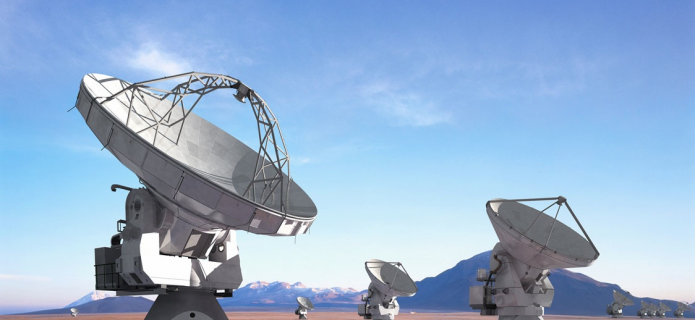ALMA on the move
Only two weeks after awarding its largest-ever contract for the procurement of antennas for the Atacama Large Millimeter Array project (ALMA), ESO has signed a contract with Scheuerle Fahrzeugfabrik GmbH, a world-leader in the design and production of custom-built heavy-duty transporters, for the provision of two antenna transporting vehicles. These vehicles are of crucial importance for ALMA.
"The timely awarding of this contract is most important to ensure that science operations can commence as planned," said ESO Director General Catherine Cesarsky. "This contract thus marks a further step towards the realization of the ALMA project."
"These vehicles will operate in a most unusual environment and must live up to very strict demands regarding performance, reliability and safety. Meeting these requirements is a challenge for us, and we are proud to have been selected by ESO for this task," commented Hans-Jörg Habernegg, President of Scheuerle GmbH.
When completed on the high-altitude Chajnantor site in Chile, ALMA is expected to comprise more than 60 antennas, which can be placed in different locations on the plateau but which work together as one giant telescope. Changing the relative positions of the antennas and thus also the configuration of the array allows for different observing modes, comparable to using a zoom lens, offering different degrees of resolution and sky coverage as needed by the astronomers.
The ALMA Antenna Transporters allow for moving the antennas between the different pre-defined antenna positions. They will also be used for transporting antennas between the maintenance area at 2900 m elevation and the "high site" at 5000 m above sea level, where the observations are carried out.
Given their important functions, both for the scientific work and in transporting high-tech antennas with the required care, the vehicles must live up to very demanding operational requirements. Each transporter has a mass of 150 tonnes and is able to lift and transport antennas of 110 tonnes. They must be able to place the antennas on the docking pads with millimetric precision. At the same time, they must be powerful enough to climb 2000 m reliably and safely with their heavy and valuable load, putting extraordinary demands on the 500 kW diesel engines. This means negotiating a 28 km long high-altitude road with an average slope of 7 %. Finally, as they will be operated at an altitude with significantly reduced oxygen levels, a range of redundant safety devices protect both personnel and equipment from possible mishaps or accidents.
The first transporter is scheduled to be delivered in the summer of 2007 to match the delivery of the first antennas to Chajnantor.
The ESO contract has a value of approx. 5.5 m Euros.
